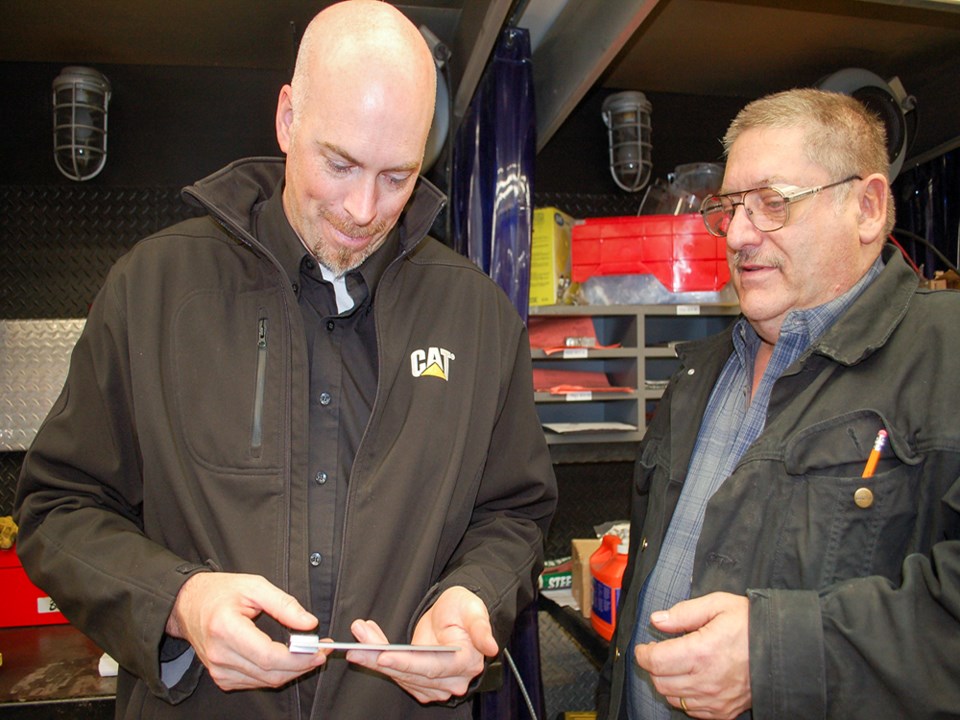They’re the people who repair and maintain stationary engines and equipment.
“Anything that doesn’t have wheels,” said instructor Gerald Neudorf, explaining what the six students in the Industrial Mechanic training program are learning during the first level of instruction at the Saskatchewan Energy Training Institute/Southeast College campus in Estevan.
The students along with Neudorf played host to visiting industry representatives on the morning of Dec. 9 at an informal meet-and-greet event.
The event featured a tour of the mobile laboratory and equipment trailer on the campus grounds.
The 17-week course leads to an applied certificate for an industrial mechanic, formerly known as millwrights, said Neudorf. Another 17-week session in the second year leads to more complete certification following criteria contained in the Saskatchewan Polytechnic program.
“We started this year’s program with nine students, we currently have six,” said Neudorf, suggesting that the educational process is fairly demanding, since it requires the students to pick up a number of skills along the way in a course that features book studies and class lectures as well as plenty of lab and on-site practical applications of what they are learning, along the way.
The six students include Connor Hassman, Nolan Franklin, Daniel Reid, Josef Elton, Damien Boen and Justin Young.
The mobile lab, where a good deal of the hands-on training takes place, features 12 work stations, so there is room to practice what they’ve been taught.
“Right now, we’re just completing a section on rigging and hoisting apparatus,” said Neudorf, adding the young men are learning that some knots on rig lines are more secure than others. That was just one point learned during a more complete lesson on building and adjusting rigging.
“The trade board sets the curriculum and standards. That means the program doesn’t change in mid-stream, so the training has some consistency right across the province,” said Neudorf in response to a question regarding the course perhaps being tailored to regional needs at any given time.
Tools are an important part of the learning curve, that means identifying what each one is designed to do and then working with them. Precision measurements are also key to industrial mechanics, said Neudorf.
Students Reid and Hassman noted the tools and items worked on may be measured in both imperial and metric scales, so they have to be comfortable working with either of them.
“We get to work with bearings and seals for instance, lubricants for machines and tool inventory is important,” said Reid.
Instructional books were open on a table near the work stations where vices, welding and grinding equipment were right at hand, proving the point that the classes feature a good mixture of theory and practical experience. That also extends to the local and regional industries where the students might gain additional experience under “real world” conditions on the job with practical training as unpaid workers.
“It’s a pretty complete course and it isn’t easy. I know the guys get a little upset with me sometimes,” said Neudorf with a chuckle. “But I think they understand how important it is to learn proper technique using the right tools.”
Several Southeast College personnel were on hand to greet the visitors and joined them for the luncheon that concluded the event.



